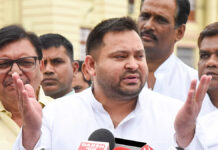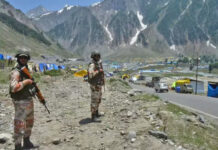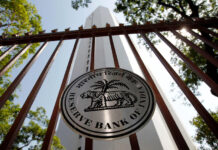To articulate the party’s political philosophy when market capitalism increasingly sets the global agenda, the Gandhi siblings need to be familiar with its history
The outcome of the Bihar Legislative Assembly election seems to suggest that the Indian National Congress is on a course of terminal decline. The familiar qualifying refrain, “barring a miracle”, does not seem to apply here given the magnitude of its non-performance. It won only 19 of the 70 seats, which is a shade over 27 per cent, of the 243 it contested. Its utterly poor show pulled down the Rashtriya Janata Dal-led alliance, the Mahagatbandhan (MGB), despite the RJD’s brave show, emerging as the largest single party with 75 seats, with the BJP a whisker short at 74. The BJP-led National Democratic Alliance (NDA) won 125 seats against the MGB’s 110.
The Congress won a little over 27 per cent of the seats it contested, while the RJD won a trifle above 53 per cent and the three Left parties, which bagged 17 seats — with the Communist Party of India (Marxist-Leninist) getting 11 — a little more than 58 per cent. This is a dismal outcome for a party that had led India’s struggle for independence from British rule and given the country a stable Government for the first 20 years as a free nation. It enjoyed unchallenged power during this period when it assiduously nurtured India’s infant democracy, enabling it to strike deep roots.
Congress leaders have contended that the 70 seats their party contested were in areas where they had traditionally fared very poorly. In the 2010 Assembly polls, the BJP-Janata Dal (United) alliance won 65 of these. They led in 67 of the 70, which were Assembly segments of various Lok Sabha constituencies, in the parliamentary elections of 2019 they fought together. The question of the matter is: Why did the Congress contest these? Why, recognising its pathetic lack of workers and organisational strength on the ground, did it not contest fewer seats and concentrate all its strength in these? Significantly, it had won 27 of the 41 seats it had contested in the 2015 Assembly elections. It is difficult to avoid the conclusion that it was ambition-driven optimism, without any basis in reality, that had prodded the party. Obviously, none in the latter’s decision-making parlour had read Macbeth saying in Shakespeare’s play of the same name, “I have no spur/ To prick the sides of my intent, but only/ Vaulting ambition. Which o’erleaps itself/ And falls on th’other.” And now, lying on the other, the party is alternating between licking its wounds and offering explanations.
The impact of this over-arching strategic blunder was aggravated by several factors. Apart from a few ineffective appearances, the Congress’s top leaders like Rahul, Priyanka and Sonia Gandhi were generally missing from the scene. One, however, wonders whether it would have made any difference if they had been more visible and vocal. It is well-known that Sonia Gandhi is ill. While enjoying a certain acceptability among leaders of most Opposition parties, she lacks the command over Hindi required to strike a chord with the masses. This stands out as a major liability vis-a-vis Prime Minister Narendra Modi, who can sweep crowds off their feet with his strident oratory and has an uncanny ability to connect with people. It is no secret that it was his speeches in a string of public rallies in the last phase of the campaign that turned the tide in the NDA’s favour.
Rightly or wrongly, Rahul Gandhi remains burdened with the “pappu” image, is an indifferent public speaker, and is seen as a part-time politician who vanishes after periodic appearances, generating much speculation about his whereabouts. The same goes for Priyanka Gandhi. Consider the Hathras rape incident. The duo burst into the forefront of the movement, demanding justice for the victim and her family, and then dropped out of sight. The argument that they had no occasion to stage another dramatic public appearance does not hold. A successful politician must know how to create such occasions. This is particularly so because a politician’s image is increasingly important in a world where issues are too complex, and their solutions too technical, for ordinary voters to decide between the plans on offer. They tend to vote for the person who, they feel, can deliver. The appearance of capability is an important determinant of a leader’s acceptability.
Can Rahul and Priyanka change the way the public seems to perceive them? Images tend to stick to people but can be overcome given foresight, determination, effort and, of course, success. When Indira Gandhi first came to power, she was regarded as a protégé of the Syndicate and a pushover. If memory serves, Ram Manohar Lohia called her a “gungi Gudiya” or a dumb doll. Yet she worsted the Syndicate on the issue of who should India’s President be — ensuring the victory of her candidate, VV Giri, over the Syndicate’s nominee, N Sanjiva Reddy — swept the Lok Sabha elections of 1971, played a critical role in Bangladesh’s liberation and established herself as a widely-accepted national leader. But for the Emergency, which remains a permanent blot on her escutcheon, she might have been remembered as India’s greatest Prime Minister.
Indira Gandhi established her position after becoming Prime Minister. Rahul and/or Priyanka Gandhi have to do so before assuming that office. It will be very difficult to do so through political action because the opportunities a Prime Minister can utilise by virtue of being in power — such as making populist moves like bank nationalisation, which Indira Gandhi resorted to — are not available to those in the Opposition. The latter can utilise the mistakes a Government makes. One, however, needs a certain political stature to lead effective movements against a Government and one cannot gain political stature unless one can lead effective movements. Stature is critically important. The movement against corruption that, surging through 1973-74, drove Indira Gandhi to the wall and prompted her to resort to the draconian step of declaring the Emergency, was led by Jayaprakash Narayan who, albeit no longer in politics then, was widely respected for his role in the freedom movement, in India’s socialist politics, and land redistribution through land gifts (Bhoodan) movement.
Can Rahul and Priyanka Gandhi build up a credible stature for themselves? To start with, they need not disappear from the public eye every now and then, and begin making knowledgeable statements about not only current events but the Congress’s political philosophy and the political, economic, social, cultural and other policies arising therefrom. These have not been adequately articulated in the recent years though the party has moved far away from the resolution adopted at its Avadi session in 1955, calling for the “establishment of a socialistic pattern of society where the principal means of production are under social ownership or control” and there is “equitable distribution of the national wealth.”
The economic trajectory the party adopted under PV Narasimha Rao’s prime ministership, and continued to pursue under Prime Minister Manmohan Singh’s watch, marked a radical departure from the course advocated at Avadi. The Congress, however, has yet to come out with a comprehensive articulation of its economic policy and its dialectic with concepts of social justice, consumer rights, democracy, the environment and human freedom. Nor has it gone beyond shibboleths and come out with a coherent formulation of its stand on human rights and secularism.
Without a philosophy, a political party lacks a compass for its policies and remains vulnerable to making compromises that, while serving ephemerally, undermine its long-term credibility.
To articulate the party’s political philosophy when market capitalism increasingly sets the global agenda, the Gandhi siblings need to be familiar with the history and the ideology of their party as well as the history of political and economic thought, and the contours of various ideologies like Marxism, laissez faire capitalism, Hindutva and the principles of integral humanism expounded by Pandit Deendayal Upadhyay.
As of now, one cannot visualise them doing so. Nor can one see a credible alternative leadership emerging within the Congress and of the latter becoming an effective political player at the national level. Recall the scant regard paid to the letter to Sonia Gandhi in August by 23 Congress leaders calling for root-and-branch reforms in the party, and their subsequent marginalisation. Without a change, one will be left with sharing William Wordsworth’s lament in On the Extinction of the Venetian Republic, “Men are we, and must grieve when even the shade/ Of that which once was great is passed away.”






























